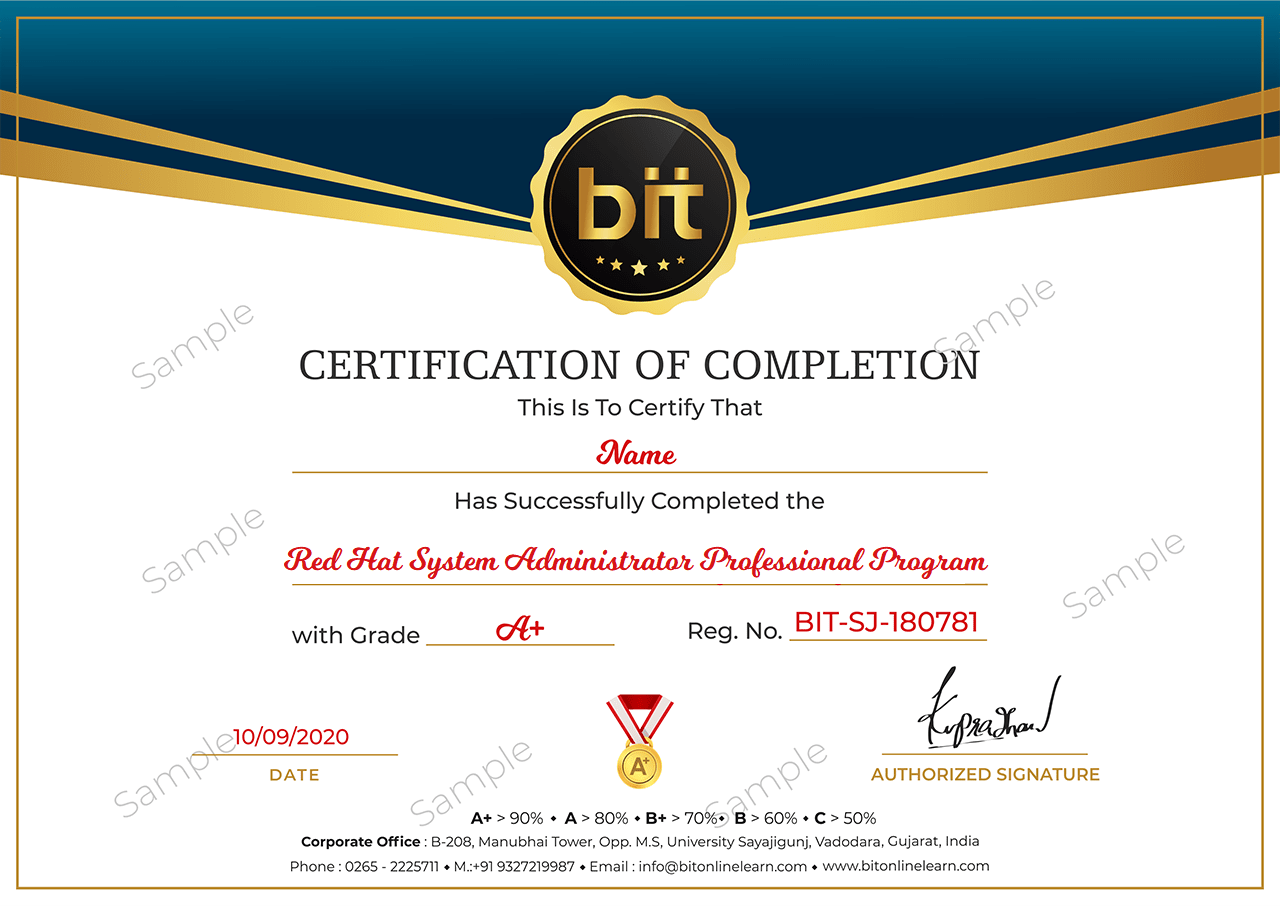Objectives
RHCSA exam candidates should be able to accomplish the tasks below without assistance. These have been grouped into several categories.
· Understand and use essential tools
· Access a shell prompt and issue commands with correct syntax
· Use input-output redirection (>, >>, |, 2>, etc.)
· Use grep and regular expressions to analyze text
· Access remote systems using SSH
· Log in and switch users in multiuser targets
· Archive, compress, unpack, and uncompress files using tar,
star, gzip, and bzip2
· Create and edit text files
· Create, delete, copy, and move files and directories
· Create hard and soft links
· List, set, and change standard ugo/rwx permissions
· Locate, read, and use system documentation including man,
info, and files in /usr/share/doc
· Create simple shell scripts
· Conditionally execute code (use of: if, test, [], etc.)
· Use Looping constructs (for, etc.) to process file,
command line input
· Process script inputs ($1, $2, etc.)
· Processing output of shell commands within a script
· Processing shell command exit codes
· Operate running systems
· Boot, reboot, and shut down a system normally
· Boot systems into different targets manually
· Interrupt the boot process in order to gain access to a system
· Identify CPU/memory intensive processes and kill processes
· Adjust process scheduling
· Manage tuning profiles
· Locate and interpret system log files and journals
· Preserve system journals
· Start, stop, and check the status of network services
· Securely transfer files between systems
· Configure local storage
· List, create, delete partitions on MBR and GPT disks
· Create and remove physical volumes
· Assign physical volumes to volume groups
· Create and delete logical volumes
· Configure systems to mount file systems at boot by
universally unique ID (UUID) or label
· Add new partitions and logical volumes, and swap to a
system non-destructively
· Create and configure file systems
· Create, mount, unmount, and use vfat, ext4, and xfs file systems
· Mount and unmount network file systems using NFS
· Extend existing logical volumes
· Create and configure set-GID directories for collaboration
· Configure disk compression
· Manage layered storage
· Diagnose and correct file permission problems
· Deploy, configure, and maintain systems
· Schedule tasks using at and cron
· Start and stop services and configure services to
start automatically at boot
· Configure systems to boot into a specific target automatically
· Configure time service clients
· Install and update software packages from Red Hat Network,
a remote repository, or from the local file system
· Work with package module streams
· Modify the system bootloader
· Manage basic networking
· Configure IPv4 and IPv6 addresses
· Configure hostname resolution
· Configure network services to start automatically at boot
· Restrict network access using firewall-cmd/firewall
· Manage users and groups
· Create, delete, and modify local user accounts
· Change passwords and adjust password aging for local user
accounts
· Create, delete, and modify local groups and group memberships
· Configure superuser access
· Manage security
· Configure firewall settings using firewall-cmd/firewalld
· Create and use file access control lists
· Configure key-based authentication for SSH
· Set enforcing and permissive modes for SELinux
· List and identify SELinux file and process context
· Restore default file contexts
· Use boolean settings to modify system SELinux settings
· Diagnose and address routine SELinux policy violations
· Manage containers
· Find and retrieve container images from a remote registry
· Inspect container images
· Perform container management using commands such as
podman and skopeo
· Perform basic container management such as running, starting,
stopping, and listing running containers
· Run a service inside a container
· Configure a container to start automatically as a systemd service
· Attach persistent storage to a container









